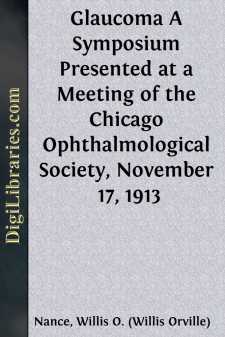Categories
- Antiques & Collectibles 13
- Architecture 36
- Art 48
- Bibles 22
- Biography & Autobiography 816
- Body, Mind & Spirit 145
- Business & Economics 28
- Children's Books 17
- Children's Fiction 14
- Computers 4
- Cooking 94
- Crafts & Hobbies 4
- Drama 346
- Education 58
- Family & Relationships 59
- Fiction 11834
- Foreign Language Study 3
- Games 19
- Gardening 17
- Health & Fitness 34
- History 1378
- House & Home 1
- Humor 147
- Juvenile Fiction 1873
- Juvenile Nonfiction 202
- Language Arts & Disciplines 89
- Law 16
- Literary Collections 686
- Literary Criticism 179
- Mathematics 13
- Medical 41
- Music 40
- Nature 179
- Non-Classifiable 1768
- Performing Arts 7
- Periodicals 1453
- Philosophy 66
- Photography 2
- Poetry 897
- Political Science 203
- Psychology 45
- Reference 154
- Religion 516
- Science 126
- Self-Help 85
- Social Science 82
- Sports & Recreation 34
- Study Aids 3
- Technology & Engineering 59
- Transportation 23
- Travel 463
- True Crime 29
Our website is made possible by displaying online advertisements to our visitors.
Please consider supporting us by disabling your ad blocker.
Glaucoma A Symposium Presented at a Meeting of the Chicago Ophthalmological Society, November 17, 1913
Categories:
Description:
Excerpt
It is convenient to start with the conception that glaucoma is increased tension of the eyeball, plus the causes and effects of such increase; although a broad survey of the facts may reveal a clinical entity to be called glaucoma, without increased tension constantly or necessarily present, and cases of increased intra-ocular tension not to be classed as glaucoma.
The physiologic tension of the eyeball is essential to ocular refraction, and closely related to ocular nutrition. Fully to understand the mechanism for its regulation would carry us far toward an understanding of the causes of glaucoma. Normal tension is maintained with a continuous flow of fluid into the eye and a corresponding outflow. Complete interruption of the nutritional stream would be speedy death; partial interruption may be held responsible for most of the visual impairment and pain of glaucoma.
The balance of intra-ocular pressure is not maintained by the slight distensibility of the sclero-corneal coat. Increased pressure does not open new channels for the escape of intra-ocular fluid; if, indeed, it does not tend to close the normal channels.
The affinity of the tissues for water, or, as Fischer explains it, the affinity of the tissue colloids for water, seems too little related to the requirements of ocular function to furnish the needed regulation of tension. The lymph spaces and blood-channels of the eye are large, as compared with the mass of its tissue colloids. In these spaces and channels must be sought a means for rapid response to the need for regulation of intra-ocular tension. Fischer has shown, that when the enucleated eyeball is placed in a weak solution of hydrochloric acid, the swelling of the tissue colloids is sufficient in a few hours, to burst the sclero-corneal coat. But this is an eye in which all nutritional changes have ceased. He brings together many facts to support the view that in the living tissues impaired circulation, and especially diminished oxidation, are the chief causes of increased affinity of the colloids for water. Such affinity increased by the impairment of the intra-ocular circulation, may well constitute a factor making for malignancy in glaucoma. But it can hardly explain the original departure from a normal pressure balance.
We must assume that intra-ocular pressure is kept down to the normal limit, by the prompt response of a regulative mechanism, which diminishes the flow of fluid into the eye, or permits its more rapid escape, whenever fluid tends to accumulate in the eye and increase its tension.
Little has been done to show that increase of fluid entering into the eye is the cause of glaucoma. A normal, or even a low arterial blood pressure is sufficiently above the normal intra-ocular pressure to furnish a source of increased fluid in the eye. Increased arterial pressure has been found in a large proportion of cases of glaucoma; and may be necessary to the production of the highest intra-ocular tension. A sudden relaxation of the arterial walls, that would permit the arterial blood pressure to make itself felt in the eye, might cause an important rise of intra-ocular tension and may be a factor in the etiology of acute attacks. It affords a possible mechanism through which may be produced the recognized glaucomatous effects of certain nerve disturbances. But such attacks are not commonly associated with noticeable flushing of the head and face generally; and paralysis of the cervical sympathetic is known to lower the intra-ocular tension.
Capillary blood pressure must lie between the arterial blood pressure and the venous blood pressure....


